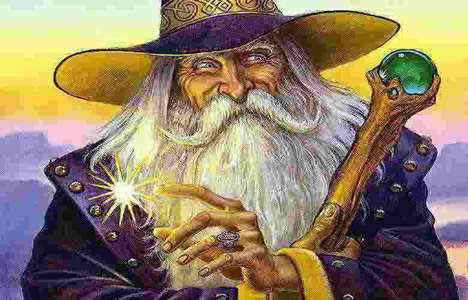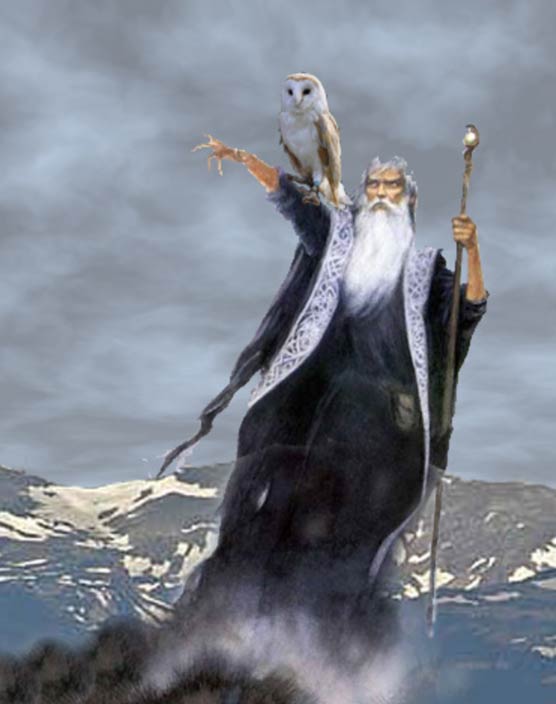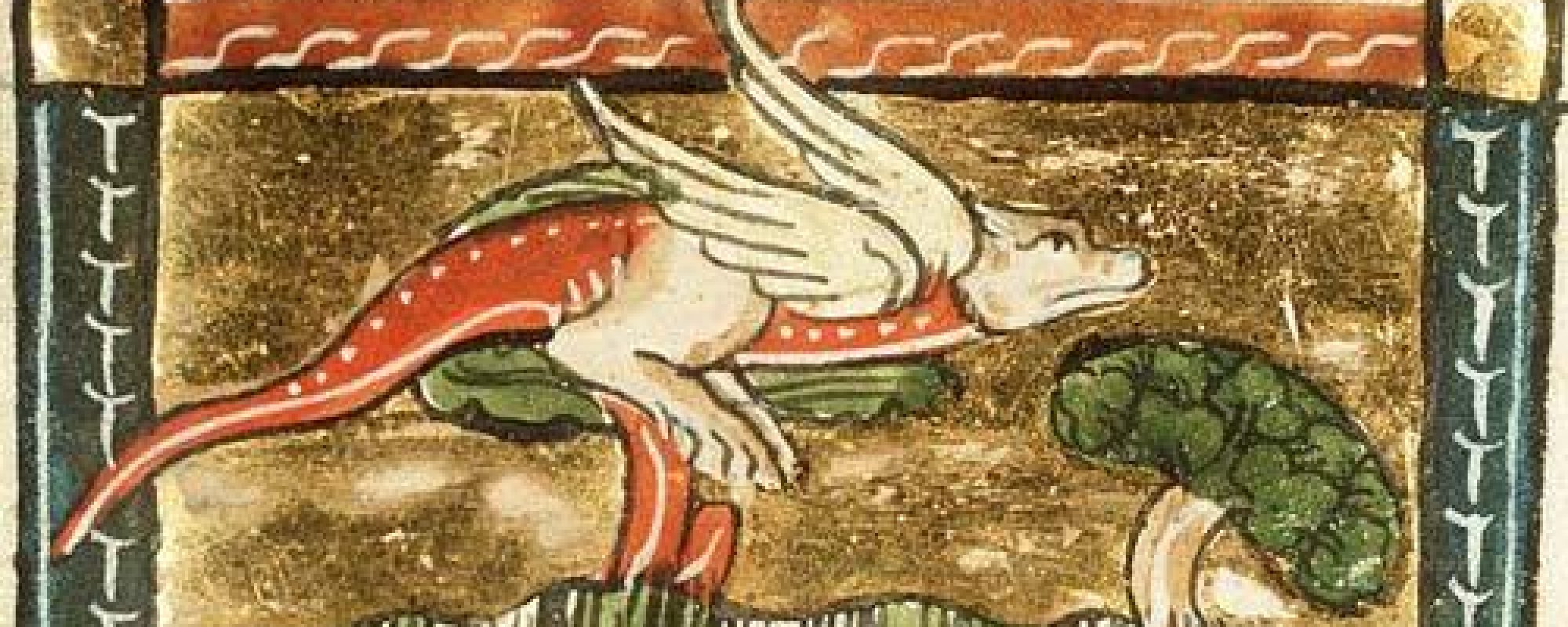
The Man, The myth, the legend
Merlin, the great wizard of King Arthur’s court, clad in cloak of clover green, ocean blue, rage red, or whatever your favorite color is (for me he wears blue, hooded cloak and a hat of the same color which is never hindered by his hood, but that’s not important). He has provided the basis for countless adaptations as well and has become the very archetype of a wizard without much of a contest- the original sorcerer supreme, if you will. But what makes him tick? Where does Merlin come from, how big is his influence, and why do we find ourselves so enamored with this, the most historic of magic men?
Merlin goes back a long time, and is usually, if not exclusively encountered in connection with King Arthur. The first depiction of Merlin in earnest is the depiction by Geoffrey of Monmouth in his text The History of the Kings of Britain based on Myrddin, the Welsh bard who continues back much further as a figure (Lawrence-Mathers, 15). Even though this was the first appearance of Merlin the character, Monmouth had written and published what acted as a prophecy book which he published under the pretense that Merlin had prophesied its contents (Barber 155). This first iteration of Merlin was a prophet among other things. Born of a virginal mother and a demon, Monmouth’s merlin became a kind of Christian figure with some seeing his gifts of foresight as following in the biblical tradition of Joseph. He was almost a historical as well as a mythical figure, giving explanation and strength to the notion that God had somehow touched England, had destined it for greatness with Merlin as a servant to that destiny (Lawrence-Mathers 4).
From here, Merlin becomes a fairly regular player, appearing in other important texts of the time like Thomas Malory’s Morte dArthur (Malory 4-9). He is, for a while, a supporting player. While Monmouth tells of his childhood and accolades apart from Arthur, he still is not the main character. The story, as much as it is interested in Merlin, is not about Merlin.What follows this in notoriety much later on is the Merlin of Lord Tennyson. This Merlin is more his own person. Even though the poem Merlin and Vivienne takes place within a larger work, this Merlin is given his own characterization, his own thoughts, his own feelings. His powers are still present in the forefront, but there are more layers added onto that. Here lies not Merlin, the object of power, but Merlin, the almost tragic figure (Haight 550,551).
Notably, Merlin’s appearance (here as Merlyn) in T.H. White’s Once and Future King is one of the most enduring as it combines the old legends and the modern sentiment to paint an almost cartoonish Merlin that remains no less tragic (Lawrence-Mathers 3). Here, Merlin, who sees time in reverse, tries and fails to save Arthur and his kingdom before disappearing until that day when Arthur returns. With his spectacles, astro-hat, owl, and phoenix (White 26,27), it is no wonder why every wizard in the D&D Player’s Handbook has an ultra-specific aesthetic.
So, when does Merlin get his own focus? While this has happened several times, the most familiar for modern audiences is likely the 2008 BBC drama, Merlin. This adaptation of several stories, pulling as far back as Monmouth and as close up as White, depicts Merlin as a boy… well, a young adult who is trying to learn how to harness his powers while keeping them a secret (The Dragon’s Call). He is the servant, friend, confidant, and punching bag to the Prince and future King Arthur and the apprentice to the physician Gaius. Here audiences are able to see Merlin through their own lense. Sure, Merlin is powerful and has a slew of prophecies about him, but that distance is closed easily by the fact that he basically has a thankless job for the most ungrateful boss in the world. While that’s not what the show is about (it isn’t like a nineties sitcom or anything), Merlin’s position as a young servant who is only trying to do his best to save himself and the ones he loves without much definite direction besides vague prophecy is deeply endearing. The humanization of Merlin makes him less of caricature and more of a character.
After all that, why does Merlin tend to stick with us. Well, he’s cool. But there is, as there must always be, more to him than vanity. Merlin represents for us a kind of fantasy with the potential to morph into an ideal. The fantasy of Monmouth’s Merlin lies in the idea that Merlin is all wise and all capable. Oh, that kings should always have the wisest of advisors; oh, that Merlin be in every cabinet! Even so, it’s telling that such wisdom cannot be purely human. This does not stop us from wanting to see ourselves in Merlin. In the end, to be Merlin would not be to be other than human. Even though it took nearly a thousand years to clamber back to it, we realize that to be Merlin is to be uniquely human.
Citations
Lawrence-Mathers, Anne. The True History of Merlin the Magician. Yale University Press, 2012. JSTOR, www.jstor.org/stable/j.ctt32bwp5. Accessed 12 May 2020.
Barber, Richard. Arthurian Literature. D.S. Brewer, 1985.
Malory, Thomas. Sir Thomas Malory’s Morte dArthur. Translated by Dorsey Armstrong, Parlor Press, 2009.
Haight, Gordon S. “Tennyson’s Merlin.” Studies in Philology, vol. 44, no. 3, 1947, pp. 549–566. JSTOR, http://www.jstor.org/stable/4172815. Accessed 12 May 2020.
White, T. H. The Once and Future King. Penguin Books, 2016. “The Dragon’s Call.” Season 1, episode 1, BBC, 20 Sept. 2008.

I know whom thou seekest, for thou seekest Merlin; therefore seek no farther, for I am he.
Merlin, Morte dArthur, Thomas Malory
